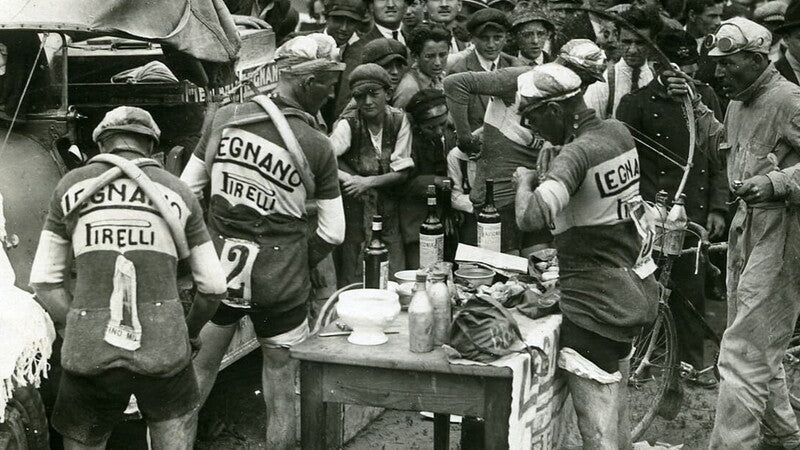The Jerseys of the Tour de France: What Do They Mean and Where Do They Come From?
If you have ever watched the Tour de France, you have undoubtedly noticed: the riders do not all wear the same jersey. Besides the team outfits, there are four iconic jerseys that stand out. Each jersey tells a story – about speed, endurance, youth, or climbing ability. And these stories are so legendary that they have even made their way into the fashion world, as seen in the stylish Abstract Peloton Sweater from The Bullet, where these jersey colors dominate the design. But what do these jerseys actually mean?

1. The Yellow Jersey (Maillot Jaune) – Leader of the general classification
The yellow jersey is by far the most famous. Whoever wears it is the leader of the general classification – the rider with the lowest total time after each stage.
🟡 Where does that yellow color come from?
The jersey was introduced in 1919. The reason for the yellow color? The French sports newspaper L’Auto, the then-organizer of the Tour, was printed on yellow paper. Thus, the jersey became yellow as a nod to their newspaper.
Did you know? Eddy Merckx wore the yellow jersey no less than 96 times in his career – a record that still stands.
2. The Green Jersey (Maillot Vert) – Best sprinter
The green jersey is for the leader in the points classification. Points are awarded to riders who finish high in flat stages or intermediate sprints. Sprinters like Peter Sagan or Mark Cavendish have elevated this jersey to an art form.
🟢 Why green?
The color was chosen in 1953, when the jersey was introduced as a tribute to 50 years of the Tour de France. Green was chosen because the original sponsor was a manufacturer of lawn mowers.
Fun fact: Peter Sagan holds the record for the most green jerseys – having won it 7 times.
3. The Polka Dot Jersey (Maillot à Pois Rouges) – Best climber
You can recognize this jersey immediately: white with red dots. It is awarded to the best climber in the Tour – the rider who scores the most points at the tops of the mountains.
🔴 How did it come about?
The polka dot jersey was introduced in 1975. The red dots are a reference to the candy packaging of the sponsor Chocolat Poulain, a well-known French chocolate maker.
Fun fact: The Frenchman Richard Virenque won this jersey 7 times – a record.
4. The White Jersey (Maillot Blanc) – Best young rider
The white jersey is for the greatest talent under 26 years old. This jersey gives a glimpse into the future of cycling. Great champions like Tadej Pogačar and Andy Schleck made their mark with it.
⚪ Why white?
The white jersey was introduced in 1975 to reward and spotlight young riders. It is the jersey of promise, of what is yet to come.
Did you know? Tadej Pogačar won this jersey three years in a row, while also claiming the general classification.
A tribute on fabric: Abstract Peloton Sweater from The Bullet
All these historical and colorful elements come together in the Abstract Peloton Sweater from The Bullet. The front view of the sweater is a playful, graphic interpretation of a cycling peloton – with clear nods to the four main jerseys of the Tour:
-
The yellow of the leader
-
The green of the sprinter
-
The white with red of the climber
-
The white of the young promise
This sweater is not only a style statement but also a subtle tribute to the rich history of cycling. Ideal for cycling fans who want to show their love for the sport even in their leisure time.

Conclusion: More than just jerseys
Each jersey in the Tour de France tells a different story – about dominance, struggle, climbing ability, or future potential. Whether you are a passionate cycling fan or simply love sporty fashion with a story, the Abstract Peloton Sweater from The Bullet captures this history in a unique design. Wear it with pride – you are wearing more than a jersey, you are wearing a piece of cycling legend.
📦 Shop now: Abstract Peloton Sweater – The Bullet
🎯 SEO Keywords: jerseys Tour de France, meaning yellow jersey, polka dot jersey explanation, cycling sweater, The Bullet sweater, Tour de France fashion


